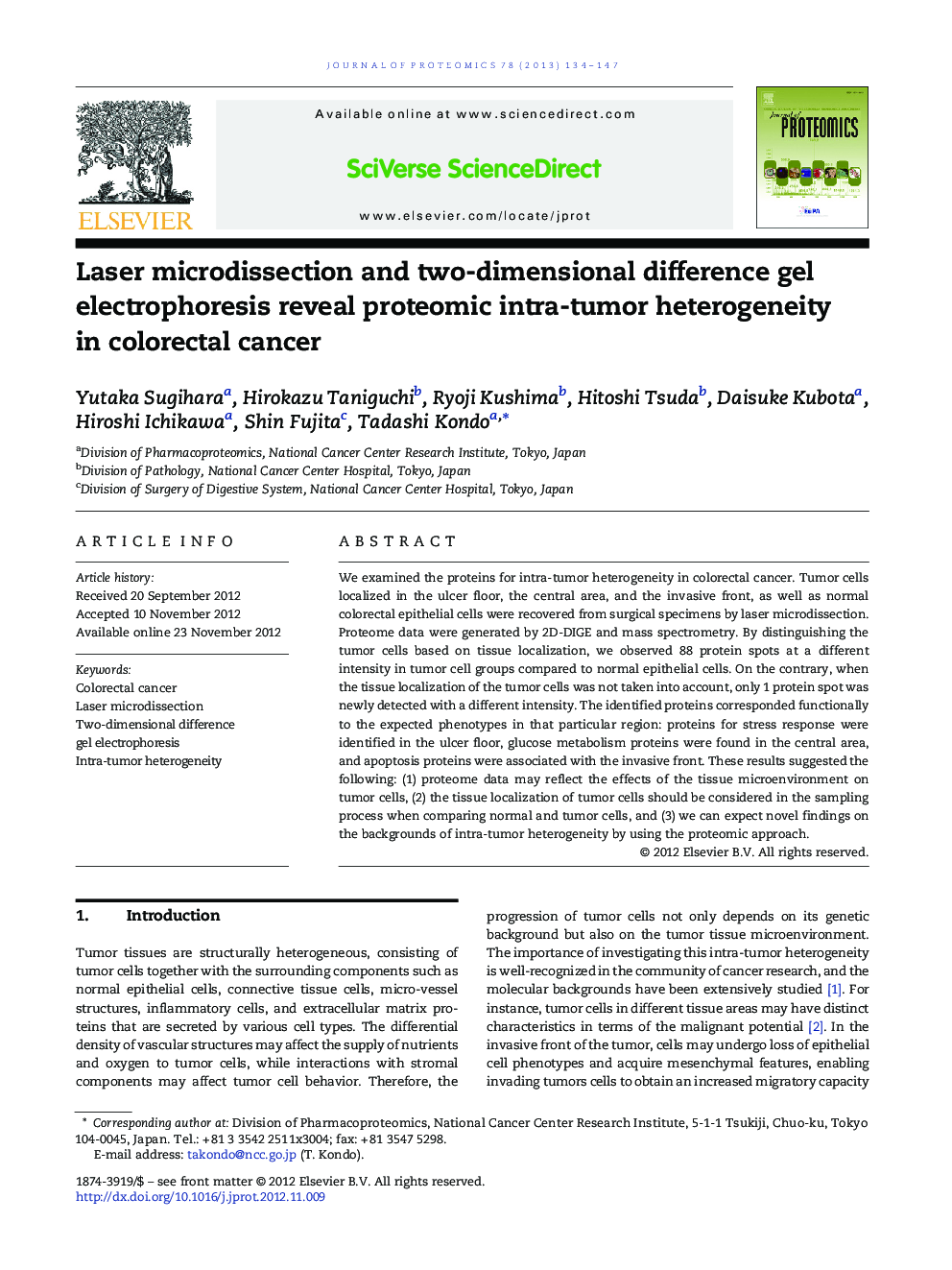| Article ID | Journal | Published Year | Pages | File Type |
|---|---|---|---|---|
| 1225573 | Journal of Proteomics | 2013 | 14 Pages |
We examined the proteins for intra-tumor heterogeneity in colorectal cancer. Tumor cells localized in the ulcer floor, the central area, and the invasive front, as well as normal colorectal epithelial cells were recovered from surgical specimens by laser microdissection. Proteome data were generated by 2D-DIGE and mass spectrometry. By distinguishing the tumor cells based on tissue localization, we observed 88 protein spots at a different intensity in tumor cell groups compared to normal epithelial cells. On the contrary, when the tissue localization of the tumor cells was not taken into account, only 1 protein spot was newly detected with a different intensity. The identified proteins corresponded functionally to the expected phenotypes in that particular region: proteins for stress response were identified in the ulcer floor, glucose metabolism proteins were found in the central area, and apoptosis proteins were associated with the invasive front. These results suggested the following: (1) proteome data may reflect the effects of the tissue microenvironment on tumor cells, (2) the tissue localization of tumor cells should be considered in the sampling process when comparing normal and tumor cells, and (3) we can expect novel findings on the backgrounds of intra-tumor heterogeneity by using the proteomic approach.
Graphical abstractFigure optionsDownload full-size imageDownload high-quality image (279 K)Download as PowerPoint slideHighlights► Colorectal cancer cells were recovered from different tissue location by laser microdissection. ► 2D-DIGE and MS identified proteins for different tissue localization. ► Functional interpretation supported the differential protein expression in tissues.
